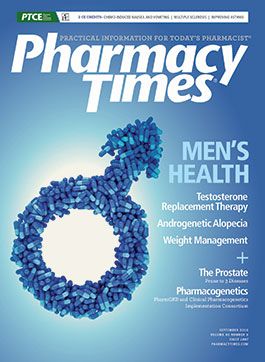Publication
Article
Pharmacy Times
Easing the Minds of Parents 1 EpiPen at a Time
Allowing school access to epinephrine injectors improves patient care.
Allowing school access to epinephrine injectors improves patient care.
in 2013, President Barack Obama signed the “school access to emergency epinephrine act,” encouraging schools to prepare for life-threatening allergic reactions.1 The law promises to give financial incentives to states that make their own legislation for schools to have access to epinephrine auto-injectors (also commonly known as EpiPens). Researchers estimate that nearly 15 million people in the United States have known food allergies, affecting about 1 in 13 children younger than 18 years. That is roughly 2 in every classroom, and it does not take into account the 20% to 25% of epinephrine administrations in schools involving students or staff members whose allergy was unknown at the time of the reaction.2
Allergic reactions can affect many parts of the body, and symptoms range from mild to moderate, with the most severe being anaphylaxis. Symptoms can include itchiness of the mouth, hives, difficulty swallowing or breathing, and a drop in blood pressure. When an allergic reaction is suspected, the patient must be rushed to an emergency department. However, because symptoms can manifest quickly, it is imperative to have quick access to epinephrine, the first line of defense against anaphylaxis. Currently, epinephrine is the only agent that can reverse the symptoms of anaphylaxis, and the only preventive measure is strict avoidance of allergic triggers. School systems create an environment where students with allergies could be in a vulnerable position because of inaccessibility to life-saving epinephrine, and political leaders and policy makers agreed. In a 2013 statement, President Obama said that this law would ease the anxiety of parents who have children with allergies, acknowledging that his daughter Malia has a peanut allergy. This legislation provides financial incentives in the form of preferential eligibility to federal asthma grants for states that create their own laws allowing nonspecific epinephrine auto-injectors to be stored and used on school grounds.
With this legislation, schools have to follow certain guidelines in order to be eligible for such grants. For example, first, schools must have trained personnel to administer an epinephrine auto-injection when there is a suspected anaphylactic reaction. Second, schools must maintain a supply of epinephrine in a secure location that is easily accessible to trained personnel. Finally, schools must have a plan for having trained personnel on school premises during all operating hours. The state must provide adequate civil liability protection for those acting pursuant to the authority of this statute. Civil liability protection is for individuals administering epinephrine voluntarily in emergencies.
However, confusion still exists around this law regarding who can administer an epinephrine pen and who is protected under the law. It is not enough that states create laws allowing schools to have access to epinephrine auto-injectors; they also have to outline who in the school can administer epinephrine in an emergency. The act states that trained personnel include those “who have been designated by the principal (or other appropriate administrative staff) of the school to administer epinephrine on a voluntary basis outside their scope of employment,” but this varies by state. In some states, only the school nurse can administer epinephrine; other states have multiple designees.
In a perfect world, every school employee would be trained to use epinephrine auto-injectors so they could act fast to possibly save a student’s life in an emergency. This kind of preparation would prevent having to (1) wait for a school nurse or another qualified individual and (2) worry about repercussions from using the device without having undergone training. This is an area where pharmacists can offer expertise to help protect children. Pharmacists are one of the most accessible health care professionals who know how to store and use an epinephrine auto-injector. Pharmacists could offer to help train more school employees in the hope that all teachers and administrators could confidently use an epinephrine auto-injector to possibly save a student’s life.
Currently, every state has legislation allowing K through 12 students with proper consent to carry their epinephrine auto-injectors, and most states have laws allowing undesignated auto-injectors to be used (Figure). However, there is still room for expansion in the future; for example, some states are allowing public venues to have access to undesignated epinephrine.3 These venues include daycare centers, theme parks, day camps, restaurants, and college campuses. With more advocacy, the anxiety of individuals with allergies and their families could begin to fade, and more lives could be saved.

Tori A. Wilhoit, a native of Williamstown, Kentucky, is a second-year PharmD student at the University of Kentucky College of Pharmacy. Joseph L. Fink III, BSPharm, JD, is professor of pharmacy law and policy and the Kentucky Pharmacists Association Endowed Professor of Leadership at the University of Kentucky College of Pharmacy, Lexington.
References
- HR 2094, 113th Congress (2013).
- Allergy facts. Asthma and Allergy Foundation of America website. aafa.org/page/allergy-facts.aspx. Accessed May 20, 2016.
- Tools and resources—advocacy—epinephrine at school. Food Allergy Research & Education website. foodallergy.org/advocacy/epinephrine-at-school. Accessed May 21, 2016.







